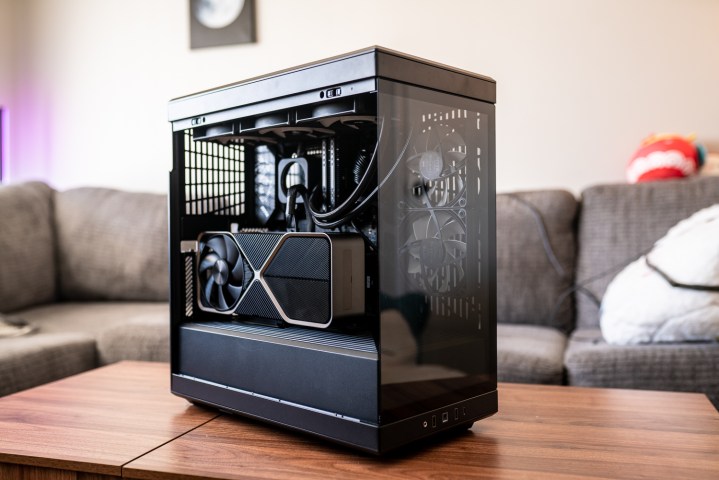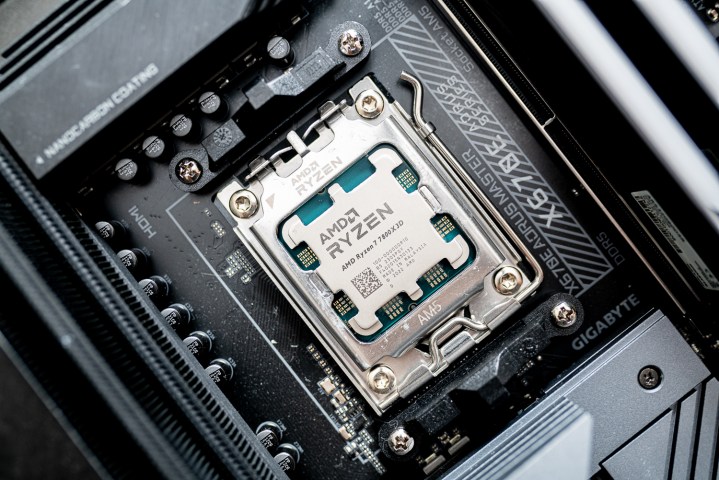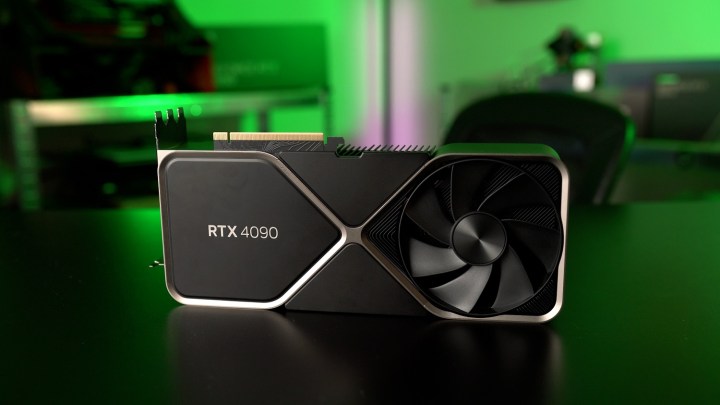
Starfield is among the most anticipated games of the year, or perhaps even the last few years, and it’s only available on PC and Xbox Series X|S. It’s no wonder that it’s got people turning to PC gaming in droves. Whether you’re looking to upgrade or buy a new computer entirely, you’ll be pleased to know that now is a good time to shop, as the prices of components are quite low.
It’s a pretty demanding title, though, so not just any gaming PC will do — you’ll need a top-notch computer that ticks a few boxes. It’s possible to get by with a lower-end PC due to the game’s support for FidelityFX Super Resolution 2 (FSR 2), but we’re focused on machines that will provide the optimal experience in the game.
The bare minimum
| Component | Price | Link | |
| CPU | AMD Ryzen 5 3600 | $93 | |
| GPU | ASRock Phantom Gaming D OC RX 6600 XT | $270 | |
| Cooling | Included | N/A | N/A |
| Motherboard | MSI B450M-A Pro | $70 | |
| Memory | Corsair Vengeance LPX DDR4-3200 16GB (2 x 8GB) | $40 | |
| Storage | Samsung 970 Evo Plus 1TB | $50 | |
| Case | Cooler Master MasterBox Q300L | $40 | |
| Power supply | Cooler Master MasterWatt 550 | $67 |
You want to play Starfield, and you’re on a budget. It looks like a very taxing game, but this PC will at least boot up and run the game at 1080p, and it only costs about $630. Don’t expect a very high frame rate, though — as you can see in our RX 6600 XT review, this build isn’t ideal for pushing games at Ultra settings.
Still, we’re satisfying the minimum requirements here. This build includes the six-core Ryzen 5 3600, along with a powerful enough GPU, and it comes stocked with 16GB of RAM and a 1TB SSD. The processor also comes with a CPU cooler, which saves a little money.
Optimal build
| Component | Price | Link | |
| CPU | AMD Ryzen 5 7600X | $235 | |
| GPU | Asus TUF GAMING OC GeForce RTX 4070 Ti or XFX Speedster MERC 319 AMD RX 6950 XT Black Gaming |
$850 or $630 |
|
| Cooling | be quiet! Pure Rock 2 | $45 | |
| Motherboard | Gigabyte B650 Gaming X AX AM5 Wi-Fi | $190 | |
| Memory | G.Skill Ripjaws S5 DDR5-6000 32GB | $85 | |
| Storage | Crucial P5 Plus 1TB NVMe SSD | $60 | |
| Case | DeepCool CC560 | $60 | |
| Power supply | Corsair RM750e (2023) 80+ Gold 750W | $100 |
If you want to be able to comfortably play Starfield at 1440p, or even 4K, this is the build to go with. Priced at around $1,400 to $1,650 (depending on your GPU choice — more on that below), this is a PC that satisfies the recommended requirements shared by Bethesda and should be able to run the game on high settings. Most of all, it’s an all-around solid build, with a dependable power supply, a decent cooler, and a lot of upgrade potential.
Before we delve into the specs, it’s worth noting that AMD currently has a good deal going on that can save you a bit of money. Most of its best processors and graphics cards are bundled with Starfield, meaning savings all around. In addition, Micro Center has a fantastic limited-edition offer on the Ryzen 5 5600X3D, so if you live near one and find this CPU available (perhaps even bundled with a motherboard), get it over my recommendation as long as future-proofing is irrelevant to you. You’ll need a different motherboard if you pick up the Ryzen 5 5600X3D, but any B550 model will do.
Choosing a processor for this build was challenging. Regardless of your budget, I recommend going with AMD for pure gaming purposes, and the Ryzen 5 7600X is on the lower end of what you might want to put inside your gaming PC. The last-gen Ryzen 5 5800X3D is a faster processor in gaming, but it locks you to the AM4 platform, which means you’d need a new motherboard if you wanted to upgrade in the future. The Ryzen 5 7600X, on the other hand, is still more than sufficient, but can be upgraded later on due to the AM5 socket. However, if your budget can be stretched, the Ryzen 7 7800X3D is a better option in every way.

I’m giving you two options when it comes to the GPU. The RTX 4070 Ti is not the best deal in terms of performance per dollar, but it’s a powerful GPU that also unlocks Nvidia’s latest Deep Learning Super Sampling (DLSS 3) technology. While this is great in most games — it’s essentially a free frame rate boost — it’s not a big deal for Starfield, specifically. This is because, due to an exclusive partnership with AMD, Bethesda doesn’t appear to have added support for DLSS to the game yet.
For the time being, the only upscaling technology supported by Starfield is AMD’s own FSR 2. FSR is open-source, though, so you can easily use it on an Nvidia GPU. It just won’t be as good as DLSS, but it’ll do.
If you’d rather stick to an AMD card, you have plenty of options in a similar price range. The RX 6800 is the minimum that Bethesda recommends if you want to play comfortably, so it’s better to buy the RX 6950 XT. Alternatively, you can bump it up a notch and get the RX 7900 XT or XTX, although that will increase the price significantly.
The rest of the build is pretty much what you’d expect at this price range. Starfield calls for a minimum of 16GB of RAM, so if you want to save money, you can scale down to 16GB. However, 32GB is quickly becoming the gold standard in AAA games, so you might as well get it. Other perks here include a motherboard with built-in Wi-Fi and a high-quality, but affordable 1TB SSD. As far as cooling goes, there’s no need to buy a liquid cooler for this processor, so you’re all set with the above.
Extreme build
| Component | Price | Link | |
| CPU | AMD Ryzen 7 7800X3D | $400 | |
| GPU | ZOTAC GAMING GeForce RTX 4090 AMP Extreme or XFX Speedster MERC310 AMD Radeon RX 7900XTX Black Gaming |
$1,630 or $960 |
or |
| Cooling | ARCTIC Liquid Freezer II 360 | $115 | |
| Motherboard | Gigabyte B650 Aorus Elite AX Wi-Fi | $200 | |
| Memory | G.Skill Trident Z5 RGB 32GB DDR5-6000 | $100 | |
| Storage | Samsung 980 Pro 2TB SSD | $130 | |
| Case | Corsair iCUE 4000X RGB | $130 | |
| Power supply | Corsair RM1000e (2023) 80+ Gold 1000W | $160 |
Feeling extreme? Well, this is the build to go with if you’ve got plenty of money to spare and just want a PC that will run Starfield at max settings without a second thought. That means 4K gaming is very much an option, and you can branch out and try some of the other most demanding games of the year without worry.
However, as you can see based on the above parts, this build isn’t cheap, ranging from $2,500 to nearly $3,000. There are some changes you can make to make it more affordable. As for adding more to it, I really wouldn’t recommend doing so for pure gaming. You’d be wasting money at that point — I’ll tell you why below.
In this build, the CPU was a no-brainer. The Ryzen 7 7800X3D is the fastest gaming CPU right now, and it also guarantees that you’ll get the Starfield bundle, making it a great deal. Sure, there are Intel options that are decent, and there’s the Ryzen 9 7950X3D if you don’t mind spending more — but nothing beats the insane performance per dollar of the Ryzen 7 7800X3D.

When it comes to the graphics card, you have a few choices. The RTX 4090 is, by far, the best graphics card currently available, but it also costs over $1,600. It’ll breeze through Starfield and everything else you throw at it, but it’s expensive. If you’d rather save the money, the other option is AMD’s top GPU, the RX 7900 XTX, which saves you around $600. Keep in mind, however, that there’s a massive performance gap between these two cards. They’re not really comparable. But the RX 7900 XTX is perfectly fine for Starfield, and most users have no need for an RTX 4090, anyway.
If you want to stick to Nvidia, the RTX 4080 is a cheaper alternative. It’s on about the same level as AMD’s RX 7900 XTX, but it offers DLSS 3. Again, we don’t know when or if that’s going to be an option in Starfield, but this is a nice feature to have in other supported games.
One thing is for sure — this build may have a tendency to heat up, and that’s not due to any problems with the components. It’s just a monster PC. Because of that, you should definitely pick up a liquid cooler, and I recommend using an all-in-one (AIO) option for minimum hassle and maximum cooling. The Corsair case also comes with plenty of airflow, and if budget is not a concern, you can always upgrade to the or the . We have a handy guide on choosing the best PC case if you’re thinking of making changes here, but be wary of compatibility.

Picking the motherboard was pretty easy. Once again, we’ve got lots of ability to upgrade thanks to the AM5 socket. You might be tempted to pay extra for an X670E or an X670 motherboard, but I’m here to tell you that it’s really not worth it unless you’re in need of extra slots or support for faster RAM. You’d be paying twice as much for that, and for gaming purposes, there’s no need.
There are cheaper options when it comes to the SSD, but at this price point, the Samsung 980 Pro is worth the money. You’d only be saving around $30 by downgrading to a cheaper 2TB option. However, if you don’t need a lot of storage, you can save as much as $90 by buying the instead.
Lastly, we have the power supply. The 1000W PSU is a little overkill, so if you’re feeling adventurous, dropping down to 850 watts is fine. I prefer to err on the side of caution and future-proofing with a stronger PSU, which is why I recommend picking up the Corsair RM1000e.
Keep it balanced

A PC built for Starfield is going to be a solid PC for all kinds of games, from Cyberpunk 2077 to Hogwarts Legacy. There are ways to cut back on some expenses and keep the budget more reasonable, so if you want to spend less, you can. However, it’s hard to build a truly budget computer that will do well with Starfield, and that’s simply because it’s a demanding game.
Whether you pick the optimal build or go down the extreme path, you should be able to enjoy a smooth gaming experience in Starfield and many other titles. Even if you scale down from the optimal build and use a cheaper GPU, you’ll still be more than fine as long as you don’t mind playing on lower settings. At the very minimum, Starfield only requires an AMD Radeon RX 5700 or an Nvidia GeForce GTX 1070 Ti, so you’ve got plenty of wiggle room there.
If you want to make any changes to the graphics card, remember to check for compatibility (slots and size), and to check your prices. These days, it’s often a better deal to shop current-gen than to dive back into the past for the likes of the RTX 2080, which is what Bethesda recommends as the minimum for playing on higher settings. Similarly, if you’re buying used components, watch for wear and tear.
I recommend using a tool like PCPartPicker to make sure everything fits well together if you’re going to alter these builds in any way. However, they’re good to go as is, so if you just want a solid gaming PC for Starfield, you don’t need to look any further.
Editors' Recommendations
- How a rumored CPU might embarrass the PS5
- 9 best processors for PC gaming: tested and reviewed
- In 2024, there’s no contest between DLSS and FSR
- Intel may fire the first shots in the next-gen GPU war
- Everything you need to know about buying a GPU in 2024





